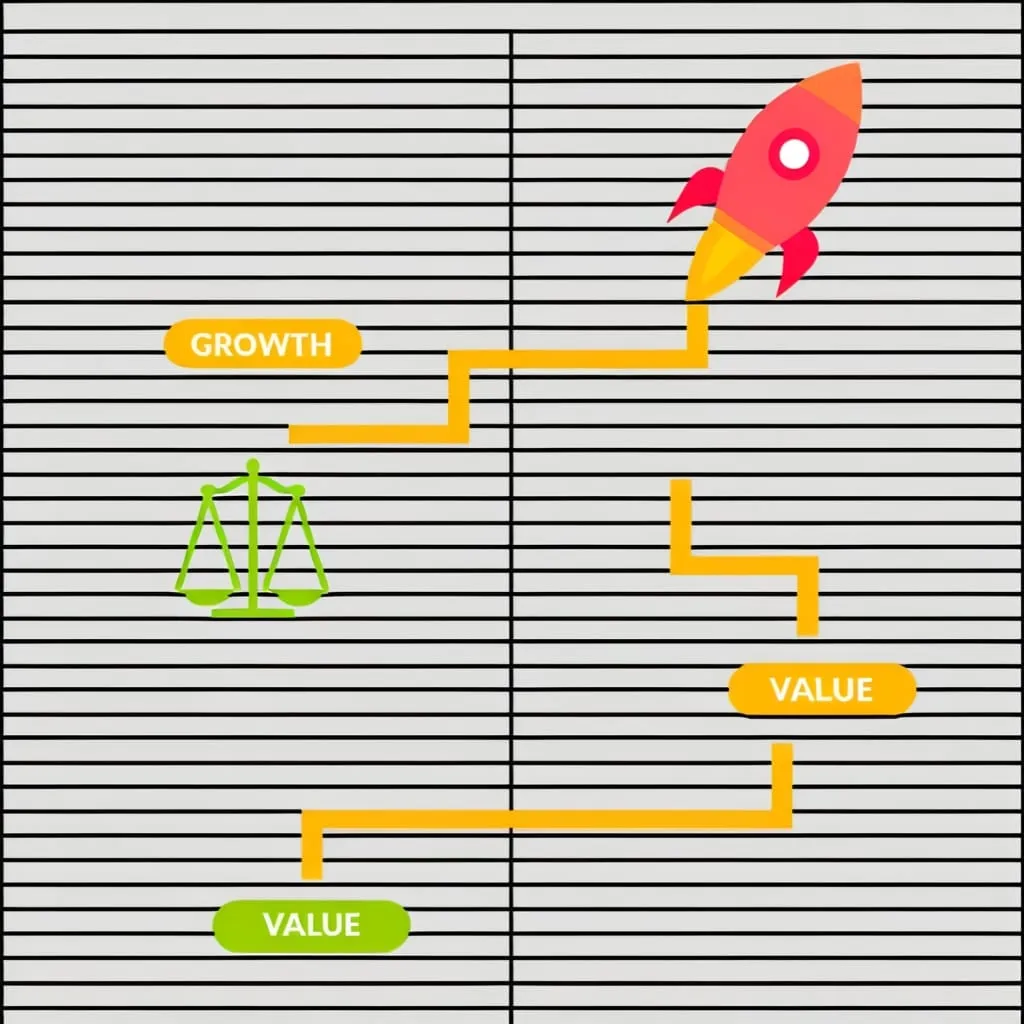Building a kickass diversified value portfolio ain't rocket science, but it does take some smarts and strategy. Let's dive into how you can create one that'll make your money work harder than you do.
First off, diversification is your best friend. It's like not putting all your eggs in one basket, but instead spreading them out so if one cracks, you're not totally screwed. Think of it as a financial safety net.
Now, let's talk asset allocation. This is where you decide how much of your money goes into different types of investments. It's like creating the perfect playlist - you want a mix that suits your style. If you're more of a play-it-safe type, you might want more bonds and cash. If you're feeling adventurous, stocks might be your jam.
Speaking of stocks, they're the rockstars of your portfolio. They can give you those high returns that'll make your heart race, but they can also be as volatile as a toddler on a sugar rush. The key is to mix it up. Get some growth stocks that are like the up-and-coming bands, and some value stocks that are more like the classic rock of investing.
Bonds are like the chill acoustic set in your portfolio. They're not as exciting as stocks, but they're reliable and can keep you grounded when the market's going crazy. It's like having that one friend who always keeps their cool when everyone else is losing their shit.
Don't forget about real estate and other funky assets. REITs let you get into real estate without actually having to deal with tenants or unclogging toilets. And things like gold or oil can be good to have around when the economy's acting weird.
Cash might seem boring, but it's like having a secret weapon. When the market tanks and everyone's panicking, you can swoop in and buy stuff on the cheap. It's like being the only sober person at a garage sale.
So, how do you actually build this portfolio? Start by figuring out how much risk you can stomach. If the thought of losing money makes you break out in hives, you might want to play it safer.
Then, pick your assets. Mix it up with stocks, bonds, maybe some real estate, and keep some cash on hand. Within each category, choose specific investments. For stocks, you might want some individual companies you believe in, plus some index funds to cover your bases.
Index funds and ETFs are like the buffet of investing - you get a little bit of everything without having to put in too much effort. They're great for spreading out your risk.
Make your life easier by automating your investments. Set it up so money automatically goes into your portfolio each month. It's like putting your investing on autopilot.
Don't just set it and forget it, though. Check in on your portfolio regularly and rebalance if needed. It's like giving your investments a tune-up.
Let's look at some real-world examples. If you're more cautious, you might go for something like 40% bonds, 30% stocks, 20% real estate, and 10% cash. If you're feeling bolder, you might flip that and go heavier on stocks.
Some folks like to focus on areas where they have insider knowledge. Like if you're a tech whiz, you might load up on tech stocks. It can pay off big time, but it's also riskier.
There's this whole debate about passive vs. active investing. Passive is like using a map to follow a well-worn trail, while active is more like blazing your own path. For most of us regular folks, passive investing through index funds is probably the way to go.
Remember, building a killer portfolio isn't a one-and-done deal. It's more like tending a garden - you gotta keep an eye on it and make adjustments as things grow or wilt.
So, get started by figuring out your risk tolerance, choosing your mix of assets, and picking specific investments. Use tools like index funds to make life easier, and don't forget to automate and review regularly.
With a solid strategy and a bit of patience, you can build a diversified value portfolio that'll have your money working overtime. Who knows, maybe you'll even beat the market and get to brag about it at your next barbecue. Now go forth and invest like a boss!






